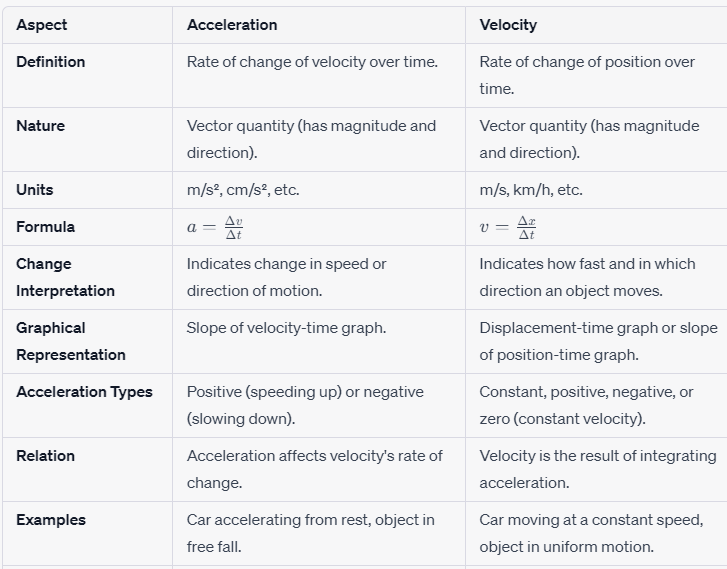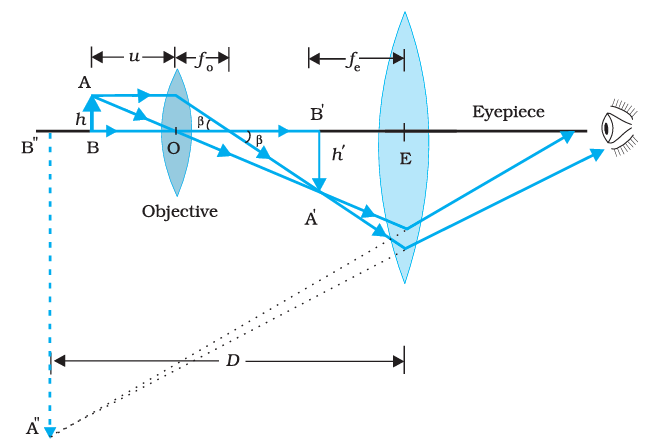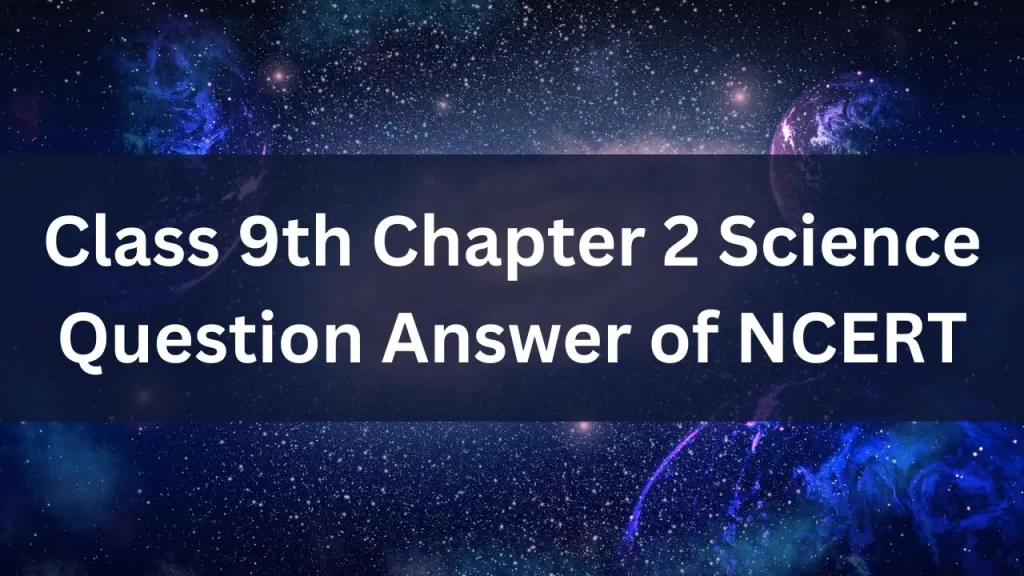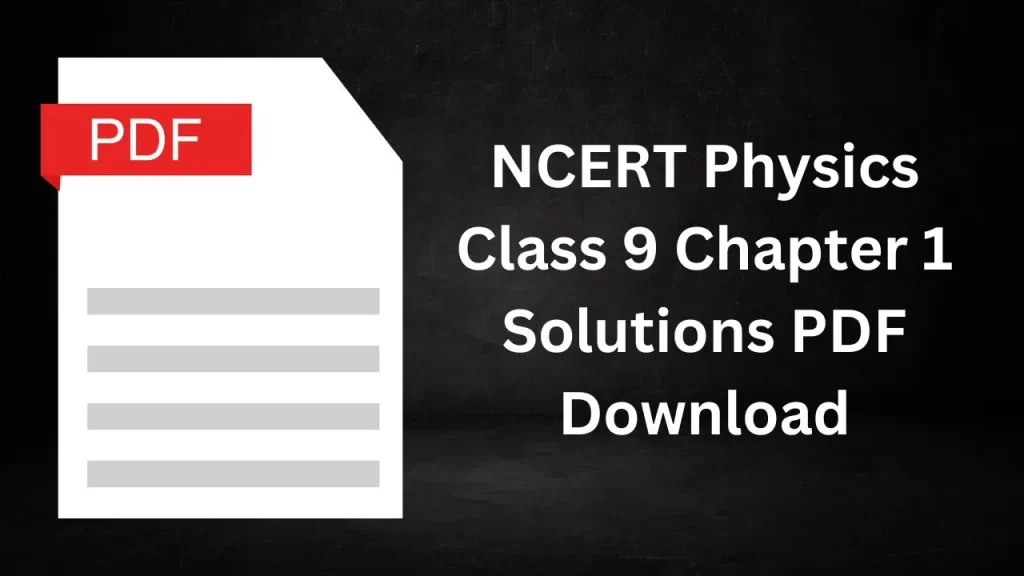Month: August 2023
Differences Between Acceleration And Velocity
Differences Between Acceleration And Velocity: Physics is a field that describes and explains the fundamental principles governing the behavior of the universe.

In the realm of mechanics, two key concepts are often discussed: acceleration and velocity. While they both relate to the motion of objects, they represent distinct aspects of an object’s movement and carry different meanings and implications.
This article aims to elucidate the differences between acceleration and velocity, highlighting their definitions, units, calculations, and real-world applications.
Differences Between Acceleration And Velocity

1. Definition and Nature:
Velocity refers to the rate of change of an object’s position concerning time. It is a vector quantity, which means it has both magnitude (numerical value) and direction. In simple terms, velocity informs us how fast an object is moving and in which direction it is headed.
Acceleration, on the other hand, signifies the rate of change of an object’s velocity concerning time. It is also a vector quantity, encompassing magnitude and direction. Acceleration portrays the change in an object’s speed or the alteration in its direction of motion.
2. Units:
Velocity is typically measured in units of distance divided by units of time, such as meters per second (m/s), kilometers per hour (km/h), or even feet per second (ft/s) depending on the context.
Acceleration is measured in units of change in velocity divided by units of time. Common units include meters per second squared (m/s²) and centimeters per second squared (cm/s²).
3. Calculations:
To calculate velocity, you can use the following formula:
Velocity(v) = Change in position(Δx)/Change in time(Δt)
For acceleration, the formula is:
Acceleration(a)=Change in velocity(Δv)/Change in time(Δt)
4. Relationship:
Velocity and acceleration are related in the sense that acceleration affects the change in velocity. When an object undergoes a constant acceleration, its velocity changes uniformly over time. If an object is accelerating in the same direction as its initial velocity, it speeds up. If it’s accelerating in the opposite direction, it slows down.
5. Real-World Examples:
Imagine a car accelerating from a standstill at a traffic light. Initially, the car’s velocity is zero because it’s not moving. As the car accelerates, its velocity increases in the direction of motion. This increase in velocity signifies positive acceleration.
Now, consider a car braking to come to a stop. As the driver presses the brakes, the car’s velocity decreases until it comes to a complete halt. This decrease in velocity denotes negative acceleration, often referred to as deceleration.
6. Graphical Representation:
Velocity and acceleration can be graphically represented over time. A velocity-time graph would show a slope corresponding to the acceleration. A constant slope indicates constant acceleration, while a changing slope signifies changing acceleration.
An acceleration-time graph would depict the rate of change of velocity over time. The slope of this graph represents the actual acceleration.
Newton’s Second Law of Motion
Newton’s Second Law of Motion is a fundamental principle in classical mechanics that establishes the relationship between the net force acting on an object, its mass, and the resulting acceleration. It states that the accel. of an object is directly proportional to the net force applied to it and inversely proportional to its mass. Mathematically, this law is expressed as:
Where:
- represents the net force applied to the object.
- is the mass of the object.
- signifies the resulting acceleration.
This law highlights that when an external force is applied to an object, it causes the object to accelerate in the direction of the force. Additionally, the greater the force applied, the greater the resulting acceleration, provided the mass remains constant. Conversely, if the mass increases while the force remains constant, the acceleration decreases.
Newton’s Second Law also encapsulates the concept of inertia, which is an object’s resistance to changes in its state of motion.
Objects with larger masses exhibit greater inertia, requiring more force to produce the same acceleration as objects with smaller masses.
This law provides a foundational framework for understanding and predicting the behavior of objects in motion under the influence of external forces.
Conclusion:
In the realm of physics and mechanics, the concepts of velocity and acceleration play crucial roles in describing and understanding the motion of objects.
While velocity reveals the speed and direction of an object’s movement, acceleration reveals how that velocity is changing over time.
These distinctions are vital for comprehending the complexities of motion and form the foundation for various scientific and technological advancements.
Whether you’re observing a rocket launch, calculating the motion of planets, or designing safer vehicles, a clear grasp of the differences between acce. and velocity is essential.
Read Also
- Matter In Our Surroundings Class 9 Summary
- Class 9th Chapter 2 Science Question Answer of NCERT
- NCERT Physics Class 9 Chapter 1 Solutions PDF Download
- CBSE Previous Year Question Papers Class 9 Science
Frequently Asked Question – FAQs on Differences Between Acceleration And Velocity
What is the fundamental difference between acceleration and velocity?
The fundamental difference lies in their definitions. Velocity is the rate of change of an object’s position concerning time and includes both speed and direction. Acceleration is the rate of change of an object’s vel. over time, indicating how much an object’s speed or direction of motion is changing.
Are velocity and acceleration scalar or vector quantities?
Both velocity and acceleration are vector quantities. This means they have both magnitude (numerical value) and direction.
How are velocity and acceleration units measured?
Velocity is measured in units of distance divided by units of time, such as meters per second (m/s) or kilometers per hour (km/h). Acceler. is measured in units of change in vel. divided by units of time, such as meters per second squared (m/s²).
Can an object have constant velocity and still be accelerating?
No, constant velocity implies that an object is moving at a steady speed in a straight line without changing direction. Acce. indicates a change in velocity, either in terms of speed or direction.
What does positive acceleration mean?
Positive acceleration occurs when an object’s vel. is increasing over time. It could mean the object is speeding up in the same direction as its initial motion or slowing down in the opposite direction.
Compound Lenses Thin Lenses In Contact
Compound Lenses Thin Lenses In Contact: In a basic lens system, a solitary lens is employed, in contrast to the compound lens system where the utilization of multiple lenses aligned along a shared axis is possible. The most straightforward form of such a compound lens setup involves the alignment of two thin lenses in direct contact. This article aims to delve into the realm of compound lenses, examining their distinctive properties.

The frequently utilized types of lenses encompass:
1. Convex Lenses (Converging Lenses)
2. Concave Lenses (Diverging Lenses)
As you may recall, we have extensively covered the characteristics of convex and concave lenses in previous sessions. Now, our focus shifts towards comprehending the intricacies of compound lenses.
Compound Lenses
The illustration below demonstrates a compound lens arrangement. Compound lenses are characterized by the presence of two thin lenses positioned on a shared axis, often in close proximity or bonded together.

Compound Lens Configuration
In cases where two thin lenses sharing an axis are positioned in contact with each other, the common focal length for the system can be determined using the following formula:
Where:
- is the combined focal length
- is the focal length of the first lens
- is the focal length of the second lens
Given that power is the reciprocal of focal length, a noticeable observation arises in this scenario. For thin lenses in contact, it becomes apparent that the combined power of the system results from the summation of the powers of the individual lenses.
However, if the lenses are not in direct contact but separated by a distance , the combined focal length can be computed using the subsequent formula:
Now, let’s put your understanding to the test with a simple problem: A bi-convex lens with a focal length of 10 cm and a bi-concave lens with a focal length of 20 cm are positioned in contact. Both lenses share the same refractive index. Calculate the combined focal length.
When delving into the realm of lens combinations, you may encounter the following terminology.
A Focal System
When the separation distance (d) between the two lenses equals the sum of their individual focal lengths (f1 + f2), the resulting combined focal length becomes infinite. This configuration causes the refracted light rays to become parallel to one another.
Achromatic Doublet
The arrangement of the lenses is designed to align such that two specific wavelengths, usually the extremes of red and violet light, converge to a focused point. This utilization represents an instance of employing a compound lens system to rectify chromatic aberrations, a phenomenon that can occur with single lenses.
Application of Compound Lenses
Compounded lenses are employed in telescopes and microscopes, combining two or more lenses to achieve the following objectives:
1. Minimize aberrations and flaws resulting from single lens usage.
2. Obtain an upright image of the object.
3. Enhance image magnification.
I trust you now have a clear comprehension of compound lenses.
The Purpose and Benefits
The application of compound lenses, particularly with thin lenses in contact, is multifaceted and impactful. Let’s explore the primary reasons behind their adoption:
- Aberration Correction: Single lenses often suffer from optical aberrations, leading to distortion, blurring, and color fringing in images. Compound lenses tackle this issue by carefully aligning and combining thin lenses. This alignment aids in reducing aberrations, resulting in clearer, sharper images.
- Chromatic Aberration Mitigation: The dispersion of light into different colors, known as chromatic aberration, is a challenge that can affect the quality of images produced by single lenses. Compound lenses help alleviate this problem by ensuring that light of varying colors converges more effectively onto a single focal point.
- Erect Image Formation: Erecting images – producing images that are not inverted – is crucial in various optical devices, such as microscopes and telescopes. Compound lenses, when configured correctly, can generate upright images, enhancing the usability of such devices.
- Magnification Enhancement: The integration of thin lenses in contact can lead to increased magnification capabilities, which is vital for applications requiring close examination of intricate details.
Read More
Frequently Asked Questions – FAQs
What are compound lenses composed of?
Compound lenses are made up of two or more thin lenses positioned in contact with each other along a common axis.
What is the purpose of combining thin lenses in contact?
Combining thin lenses in contact helps to correct optical aberrations and improve the quality of images formed.
What advantage do compound lenses offer over single lenses?
Compound lenses help to correct chromatic aberrations that can occur with single lenses, leading to improved image quality.
Where are compound lenses commonly used?
Compound lenses are frequently used in telescopes and microscopes to achieve various optical benefits, including increased magnification and reduced defects.
Can compound lenses be used for erect image formation?
Yes, by properly arranging the thin lenses, compound lens systems can produce an erect image of an object.
What is the significance of correcting chromatic aberrations?
Correcting chromatic aberrations ensures that different colors of light converge to the same focal point, resulting in sharper and clearer images.
Matter In Our Surroundings Class 9 Summary

Matter In Our Surroundings Class 9 Summary: Matter is all around us; it’s the substance that occupies space and has mass. In the realm of science, understanding matter and its various properties is crucial.
The study of matter begins with the class of substances known as “Matter in Our Surroundings.” This topic, covered in Class 9 of the CBSE curriculum (and equivalent standards), provides a fundamental understanding of the nature and behavior of matter in different states.
“Matter in Our Surroundings” is a chapter from the Class 9 Science curriculum that focuses on introducing students to the concept of matter, its various states, and the properties associated with these states. Here’s a summary of the key points covered in this chapter:
Matter In Our Surroundings Class 9 Summary
Following topics are covered in class 9 chapter 1 Matter and Surroundings
States of Matter:
-
- Introduction to the three primary states of matter: solid, liquid, and gas.
- Explanation of how the arrangement and movement of particles differ in each state.
Kinetic Theory of Matter:
-
-
- Definition and explanation of the Kinetic Theory of Matter.
- Understanding that particles are in constant motion, and their kinetic energy increases with temperature.
- Relationship between temperature and the state of matter.
-
Change of State:
- Explanation of various processes that involve changing the state of matter:
- Melting: Solid to liquid.
- Freezing: Liquid to solid.
- Evaporation: Liquid to gas.
- Condensation: Gas to liquid.
- Sublimation: Solid to gas.
- Deposition: Gas to solid.
- Description of how energy is gained or lost during these state changes.
Effect of Pressure and Temperature:
- Discussion of the influence of pressure and temperature on the states of matter.
- Explanation of how changes in pressure and temperature can lead to changes in state.
Diffusion:
- Definition and explanation of diffusion as the movement of particles from higher to lower concentration.
- Factors affecting the rate of diffusion, including temperature, particle size, and intermolecular forces.
Brownian Motion:
- Introduction to Brownian motion as the random movement of microscopic particles suspended in a fluid.
- Significance of Brownian motion in demonstrating the kinetic behavior of particles.
Importance in Daily Life:
- Illustration of the practical applications of understanding matter and its behavior in everyday situations.
- Examples of how knowledge of matter’s properties and states contributes to various fields and activities.
Matter In Our Surroundings Class 9 Summary
States of Matter:
Matter exists in three primary states: solid, liquid, and gas. These states are defined by the arrangement and movement of particles within a substance.
In solids, particles are tightly packed and have a fixed shape and volume. Liquids have particles that are close together but can move past each other, allowing them to take the shape of their container.
Gases have particles that are widely spaced and move freely, leading to indefinite shape and volume.
Kinetic Theory of Matter:
The Kinetic Theory of Matter explains the behavior of particles in different states. It posits that particles are in constant motion, with their kinetic energy increasing as temperature rises.
When heated, particles gain energy and move more vigorously, leading to changes in state. Cooling reduces particle movement, resulting in a state change as well.
Change of State:
Substances can change from one state to another through processes like melting, freezing, evaporation, condensation, sublimation, and deposition.
Melting is the transition from solid to liquid, while freezing is the reverse. Evaporation involves the conversion from liquid to gas, and condensation is the opposite process.
Sublimation occurs when a solid changes directly into a gas, bypassing the liquid state, and deposition is the reverse of sublimation.
Effect of Pressure and Temperature: Matter In Our Surroundings Class 9 Summary
Both pressure and temperature have a significant impact on the states of matter. Increasing pressure can force gases to condense into liquids and liquids to freeze into solids.
On the other hand, higher temperatures can cause solids to melt into liquids and liquids to evaporate into gases. This relationship is best described by phase diagrams, which show the conditions at which a substance exists in a specific state.
Diffusion:
Diffusion is the process of particles moving from regions of higher concentration to lower concentration until a uniform distribution is achieved.
It is a common phenomenon in gases and liquids, driven by the random motion of particles. Factors such as temperature, particle size, and intermolecular forces influence the rate of diffusion.
Brownian Motion:
Brownian motion is the erratic, random movement of microscopic particles suspended in a fluid (liquid or gas).
It was first observed by Robert Brown and serves as direct evidence of the kinetic behavior of particles in fluids.
Importance in Daily Life:
Understanding matter and its behavior has practical applications in our daily lives. From cooking to transportation, from weather changes to medical advancements, knowledge of the properties of matter and its various states helps us comprehend and manipulate the world around us.
Read Also
- Class 9th Chapter 2 Science Question Answer of NCERT
- NCERT Physics Class 9 Chapter 1 Solutions PDF Download
- CBSE Previous Year Question Papers Class 9 Science
- NCERT Science Book Class 9 Solutions Pdf Free Download
Frequently Asked Questions – FAQs on Matter In Our Surroundings Class 9 Summary
What is the main focus of the topic “Matter in Our Surroundings” in Class 9?
The main focus of this topic is to introduce students to the concept of matter, its various states (solid, liquid, gas), the kinetic theory explaining the behavior of particles in these states, and the processes of changing states due to factors like temperature and pressure.
What are the three primary states of matter?
The three primary states of matter are solid, liquid, and gas. These states are defined by the arrangement and movement of particles within a substance.
What does the Kinetic Theory of Matter explain?
The Kinetic Theory of Matter explains that particles in all states of matter are in constant motion. It states that as temperature increases, the kinetic energy of particles also increases, leading to changes in state.
What are the processes involved in changing the state of matter?
The processes of changing the state of matter are:
-
- Melting: Solid to liquid.
- Freezing: Liquid to solid.
- Evaporation: Liquid to gas.
- Condensation: Gas to liquid.
- Sublimation: Solid to gas.
- Deposition: Gas to solid.
How does pressure affect the states of matter?
Increasing pressure can cause gases to condense into liquids and liquids to freeze into solids. Decreasing pressure can lead to the opposite changes in state.
12th Class English Book Question Answer Pdf Download
Download 12th Class English Book Question Answer Pdf: English stands as a paramount and approachable subject for learning and achieving high scores in board examinations.
To facilitate a comprehensive grasp of both fundamental and advanced aspects of the English Flamingo curriculum today, we present an array of NCERT Solutions for Class 12 English Flamingo, encompassing all chapters.

It’s widely acknowledged that NCERT Solutions serve as an optimal preparatory resource, serving as the fundamental study material for all students.
The NCERT Class 12 English Flamingo Solutions Pdf furnishes crucial inquiries and their corresponding answers, presented in lucid language to foster facile comprehension of the underlying concepts.
These queries and solutions, encapsulated within the pages of NCERT English Flamingo Textbooks, are meticulously composed by subject matter experts in adherence to the guidelines set forth by the NCERT and CBSE boards.
Hence, you’re encouraged to procure chapter-specific NCERT English Solutions Pdf from this platform, thereby establishing a robust foundation in the subject, empowering you to confidently approach all queries posed in both board examinations and other competitive assessments.
12th Class English Book Question Answer Pdf Download
Class 12 English Flamingo NCERT Solutions PDF
- Chapter 1: The Last Lesson
- Chapter 2: Lost Spring
- Chapter 3: Deep Water
- Chapter 4: The Rattrap
- Chapter 5: Indigo
- Chapter 6: Going Places
- Chapter 7: My Mother At Sixty Six
- Chapter 8: An Elementary School Classroom In A Slum
- Chapter 9: Keeping Quiet
- Chapter 10: A Thing Of Beauty
- Chapter 11: Aunt Jennifers Tigers
Class 12 English Vistas NCERT Solutions PDF
- Chapter 1: Third Level
- Chapter 2: The Tiger King
- Chapter 3: The Enemy
- Chapter 4: Journey To The End Of The Earth
- Chapter 5: Should Wizard Hit Mommy
- Chapter 6: On The Face Of It
- Chapter 7: Evans Tries An O level
- Chapter 8: Memories Of Childhood
Convenience at Your Fingertips:
Gone are the days when students had to carry heavy textbooks or search through physical notes to find answers to their queries.
With 12th Class English Book Question-Answer PDFs, all the necessary content is a few clicks away. These PDFs can be downloaded and stored on various devices, enabling students to access them whenever and wherever they require.
This convenience ensures that learning isn’t bound by location or time constraints, facilitating effective self-paced studying.
Comprehensive Learning:
The 12th-grade English curriculum often entails intricate concepts, literary analysis, and language nuances.
Question-answer PDFs derived from the English textbook provide a structured and comprehensive approach to learning.
Each chapter’s set of questions and corresponding answers cater to a holistic understanding of the material. This methodical approach helps students delve deeper into the subject matter, clarifying doubts and building a strong foundation.
Enhanced Retention and Revision:
Retaining information and revising concepts is crucial for academic success. The question-answer format aids in this process.
By reviewing questions and answers periodically, students reinforce their memory of key points, literary elements, and analytical skills.
This active engagement with the content significantly contributes to long-term retention, making it easier to recall information during examinations.
Practice Makes Perfect:
Practice is the cornerstone of proficiency. With downloadable question-answer PDFs, students can engage in extensive practice sessions.
By attempting a diverse range of questions, they hone their critical thinking and problem-solving abilities.
Moreover, the answers provided in the PDFs act as benchmarks, allowing students to assess their performance and identify areas that require further attention.
Preparation for Examinations:
When the 12th-grade examinations approach, students often seek consolidated resources for revision.
The question-answer PDFs serve as invaluable tools during this phase. They condense the entire syllabus into manageable sections, enabling students to systematically review and revise each topic.
Additionally, practicing questions similar to those that might appear in exams fosters a sense of familiarity, reducing anxiety and enhancing confidence.
Inclusivity and Accessibility:
One of the greatest advantages of 12th Class English Book Question-Answer PDFs is their inclusivity.
They break down barriers to learning by being accessible to students of varying learning styles, abilities, and locations.
These resources promote equity in education by providing a level playing field for all students, regardless of their circumstances.
In conclusion, the availability of 12th Class English Book Question-Answer PDFs for download has ushered in a new era of convenience and efficiency in education.
These resources empower students to take charge of their learning, enabling them to navigate the complexities of the curriculum with confidence.
As digital learning continues to evolve, these PDFs stand as a testament to the positive impact technology can have on education.
Frequently Asked Questions – FAQs on 12th Class English Book Question Answer Pdf
1. What are 12th Class English Book Question Answer Pdf?
12th Class English Book Question-Answer PDFs are digital documents that contain a curated set of questions and their corresponding answers derived from the 12th-grade English textbook. These PDFs serve as supplementary study materials, aiding students in comprehending and mastering the curriculum.
2. How can I access and download the 12th Class English Book Question Answer Pdf?
You can access and download 12th Class English Book Question-Answer PDFs from various educational websites, online platforms, or educational forums. Search for the specific textbook and chapter you’re looking for, and you’ll likely find downloadable PDFs for practice and revision.
3. What benefits do 12th Class English Book Question Answer Pdf offer to students?
These PDFs offer several benefits, including convenience, comprehensive learning, enhanced retention, and ample practice opportunities. They provide an organized approach to studying, aiding students in understanding complex concepts, revising effectively, and preparing for exams.
4. Are the questions in these PDFs aligned with the exam pattern?
Yes, many of these question-answer PDFs are designed to align with the exam pattern and question types commonly found in 12th-grade English board examinations. They often include a mix of short answer questions, long answer questions, comprehension passages, and literary analysis questions.
5. Can these PDFs replace the official textbooks?
While 12th Class English Book Question-Answer PDFs are valuable study aids, they are not meant to replace the official textbooks. Textbooks provide the foundational content and context necessary for a comprehensive understanding of the subject. PDFs, on the other hand, offer focused practice and revision.
Class 9th Chapter 2 Science Question Answer of NCERT
Welcome to an insightful Class 9th Chapter 2 Science Question Answer of NCERT – a journey that delves into the world of scientific inquiry and understanding.
In this article, we will unravel the intricate web of questions and answers that this chapter presents, guiding you through the fundamental principles of science and encouraging a deeper comprehension of the natural phenomena that surround us.

Class 9th Science, Chapter 2, serves as a crucial stepping stone in the educational voyage, laying the foundation for a broader understanding of scientific concepts.
As we navigate through this chapter’s questions and seek their answers, we will not only enhance our knowledge but also nurture our curiosity about the way the world works.
From the tiniest atoms to the vast expanse of the cosmos, science offers us a lens through which we can view the universe. This chapter prompts us to question, to analyze, and to seek logical explanations for the various phenomena that shape our reality.
By addressing these questions and grasping the underlying principles, we open doors to discovery and innovation, empowering ourselves to make informed decisions in an increasingly complex world.
So, let us embark on this intellectual journey, where we shall engage with questions that pique our curiosity, challenge our thinking, and ultimately equip us with a deeper appreciation for the wonders of the natural world.
As we explore the Science Class 9th Chapter 2 question answers, we invite you to join us in this exploration of knowledge and insight.
Class 9th Chapter 2 Science Question Answer of NCERT
Read Also
- NCERT Physics Class 9 Chapter 1 Solutions PDF Download
- CBSE Previous Year Question Papers Class 9 Science
- NCERT Science Book Class 9 Solutions Pdf Free Download
- Matter In Our Surroundings Class 9 Notes Pdf Download
Class 9th Chapter 2 Science Question Answer of NCERT
Class 9th Science is a foundational step in a student’s academic journey, offering insights into the fundamental principles governing the natural world.
This subject bridges the gap between theoretical knowledge and practical applications, providing a holistic understanding of diverse scientific disciplines like physics, chemistry, and biology. Its significance lies in cultivating critical thinking skills, problem-solving abilities, and fostering a scientific temperament.
By unraveling the mysteries behind everyday phenomena, Class 9th Science empowers students to make informed decisions about their environment, health, and society.
The subject encourages curiosity-driven inquiry, equipping students with tools to question assumptions, explore hypotheses, and arrive at evidence-based conclusions.
Moreover, it prepares students to address global challenges such as climate change and technological advancements, offering the skills necessary to adapt and contribute constructively.
Beyond the classroom, Class 9th Science holds relevance in a wide array of careers, from medicine and engineering to research and technology.
This subject sparks curiosity, nurturing a lifelong passion for learning and discovery. As students delve into the intricacies of scientific principles, they lay the foundation for future academic pursuits and develop a holistic perspective on the world around them.
Introduction to Chapter 2 and its Significance
Chapter 2 of Class 9th Science embarks on a captivating journey into the heart of scientific exploration.
This chapter serves as a gateway to understanding the intricate relationships that govern the physical world, delving into fundamental concepts that underpin the natural phenomena we encounter daily.
Its significance lies in its role as a cornerstone for building a strong scientific foundation, fostering critical thinking, and inspiring curiosity.
At its core, Chapter 2 invites students to question the “how” and “why” of various scientific phenomena.
From the behavior of matter to the principles governing motion, this chapter acts as a guiding light, illuminating the path to discovery.
It introduces key concepts that form the bedrock of advanced scientific studies, making it an essential stepping stone for students aspiring to pursue diverse careers in science and technology.
The chapter’s significance extends beyond the classroom walls. By unraveling the principles behind seemingly complex phenomena, students are empowered to decipher the mysteries of the universe and make informed decisions in an ever-evolving world.
It encourages a scientific mindset that fosters critical analysis, logical reasoning, and problem-solving skills – qualities that are indispensable not only in scientific pursuits but also in various aspects of life.
Explanation Of The Fundamental Concepts Covered In The Chapter
In Class 9th Chapter 2 of Science, students are introduced to fundamental concepts that unlock the secrets of matter and its transformations.
Exploring the three states of matter – solid, liquid, and gas – this chapter delves into the microscopic world of particles, revealing how atoms and molecules interact to give rise to different forms of matter.
The chapter elucidates the processes of change of state, where matter transitions between solid, liquid, and gas due to varying temperature and pressure conditions.
It unveils the intriguing concept of latent heat, explaining the energy exchange during these changes without altering temperature. Evaporation, a common phenomenon, is dissected, along with its factors and applications.
Boiling, both as a process and its dependence on pressure, is demystified, leading to an understanding of practical applications like cooking and steam engines. Sublimation, where solids transform directly into gases, is explored, as is diffusion – the movement of particles leading to the mixing of substances.
These concepts collectively lay the groundwork for comprehending the behavior of matter and its dynamic transformations.
By grasping the molecular intricacies underlying these phenomena, students develop a foundational understanding crucial for advanced scientific studies.
The chapter not only uncovers the science behind everyday occurrences but also fosters an inquisitive mindset, nurturing a lifelong curiosity about the intricacies of the natural world.
Real-life Applications of Class 9th Chapter 2 Science Question Answer of NCERT
The concepts covered in Class 9th Chapter 2 of Science have a multitude of real-life applications that extend beyond the classroom. Here are some examples of how these concepts are relevant in everyday life:
- Cooking Processes: The understanding of states of matter and their changes is crucial in cooking. Boiling water for pasta or steaming vegetables relies on the principles of boiling and evaporation. Pressure cookers work by raising the boiling point through increased pressure, leading to faster cooking times.
- Climate Control and HVAC Systems: The principles of evaporation and condensation play a significant role in climate control systems. Air conditioning units use evaporation of refrigerants and condensation to cool indoor spaces effectively.
- Medicine and Pharmaceuticals: The concept of sublimation finds application in freeze-drying pharmaceuticals and preserving delicate substances like vaccines. It’s also used in making dry powdered medications.
- Food Preservation: Freeze-drying and sublimation are used to preserve food items like freeze-dried fruits and instant coffee. By removing moisture, these processes extend the shelf life of products.
- Transportation and Engines: Understanding the behavior of gases and pressure is essential in designing engines. Steam engines, for instance, utilize the principle of boiling to produce mechanical work.
Conclusion
Class 9th Science, as explored in this article, is not just a subject but a gateway to understanding the world in a structured and systematic manner. It equips students with the tools they need to decipher the complexities of the natural world, fostering critical thinking, problem-solving skills, and a scientific outlook. By unraveling the mysteries of everyday phenomena, students are empowered to make informed decisions that impact their environment, health, and society.
The significance of Class 9th Science extends beyond the classroom, touching various facets of life. It lays the foundation for diverse career paths, from medicine and engineering to research and technology, while also instilling a lifelong passion for learning and discovery. This subject introduces fundamental concepts that form the basis for advanced scientific studies and practical applications in various industries.
Chapter 2 serves as a pivotal milestone in this journey, offering insights into the behavior of matter and its dynamic transformations. Through understanding states of matter, change of state, evaporation, diffusion, and more, students gain a deep appreciation for the scientific principles that shape the world around them.
Frequently Asked Questions – FAQs
What is the significance of Chapter 2 in Class 9th Science?
This chapter lays the groundwork for understanding the behavior of matter and its changes. It introduces fundamental concepts like states of matter, change of state, evaporation, and diffusion, forming the basis for more advanced scientific studies.
Why is understanding the states of matter important?
States of matter (solid, liquid, gas) are fundamental to our everyday experiences. Understanding their properties and transitions helps explain a wide range of phenomena, from boiling water to the behavior of gases.
How does evaporation differ from boiling?
Evaporation occurs at the surface of a liquid, even at temperatures below its boiling point. While boiling is a bulk process involving the entire liquid and happens at its boiling point.
What is latent heat, and why is it important?
Latent heat is the heat energy absorbed or released during a change of state without temperature change. It’s crucial as it explains why temperature remains constant during processes like melting and boiling.
How does diffusion work, and why is it significant?
Diffusion is the mixing of particles due to their random motion. It’s important for understanding processes like the spread of odors, the mixing of substances, and even cellular processes in biology.
NCERT Physics Class 9 Chapter 1 Solutions PDF Download

The NCERT Physics Class 9 Chapter 1 Solutions serve as an instant and effective way for students to resolve any uncertainties they may have.
These solutions serve as a guiding light, leading students through the essential concepts outlined in the CBSE Class 9 Science curriculum. By engaging with the exercises provided in the textbook, students can establish a solid grasp of the subject matter.
In the process of tackling these exercises, students often encounter questions that give rise to uncertainties. This is precisely where the NCERT Solutions for Class 9 prove invaluable. They furnish concise explanations and comprehensive answers to address these uncertainties.
Encompassing pivotal chapters such as Matter, Atoms, Tissues, Living Organisms, Motion, Force, Laws of Motion, Gravitation, Energy and Work, Sound, Natural Resources, among others, these CBSE Science NCERT Solutions for Class 9 comprehensively cover the gamut of important topics contained within the textbook.
NCERT Physics Class 9 Chapter 1 Solutions PDF Download
Read Also
- Matter In Our Surroundings Class 9 Sample Paper With Answers
- Class 9 Science Chapter 1 Matter in Our Surroundings Notes
- NCERT Science Book Class 9 Solutions Pdf Free Download
- Matter In Our Surroundings Class 9 Notes Pdf Download
- Important Questions of Matter in Our Surroundings Class 9
- Class 9th Chapter 2 Science Question Answer of NCERT
NCERT Physics Class 9 Chapter 1 Solutions PDF Download
When it comes to fostering a solid foundation in the realm of physics, NCERT (National Council of Educational Research and Training) resources have stood the test of time as a beacon of clarity and understanding.
The NCERT Physics Class 9 Chapter 1 Solutions, available for download in PDF format, serve as an invaluable tool for students embarking on their scientific journey. In this article, we delve into the significance of these solutions and explore how they contribute to a deeper understanding of the subject matter.
Chapter 1: Matter in Our Surrounding
The journey through the Class 9 science textbook embarks with a captivating exploration of “Matter in Our Surroundings.” The very fabric of the world around us consists of a substance known as matter.
These tangible entities occupy space and possess mass, forming the building blocks of our reality. In ancient times, Indian philosophers discerned five fundamental elements that constituted matter, referred to as Panch Tatva – encompassing air, water, earth, sky, and fire.
However, the paradigm has shifted with the advent of modern science, unveiling dual classifications rooted in physical properties and chemical behaviors. This opening chapter takes students on a voyage into the realm of matter’s physical attributes.
Matter, though imperceptibly minute, is composed of particles. These elemental constituents maintain infinitesimal gaps between them, incessantly in motion, while simultaneously exerting an attractive force upon each other.
Our immediate surroundings harbor matter in three distinct states: solid, liquid, and gas. These states emerge from the nuanced traits exhibited by the constituent particles.
Delving into a rich tapestry of activities, this chapter unravels the intricacies of all three states, elucidating their essence.
Crucially, the text unfurls the notion that the state of matter is not fixed but mutable. A metamorphosis between states is achievable by manipulating temperature or pressure.
The phenomenon of a liquid’s transformation into vapor beneath its boiling point is labeled as evaporation. Factors influencing the rate of evaporation span the surface area exposed to the environment, ambient temperature, humidity levels, and wind velocity.
Notably, evaporation wields a cooling effect, an intriguing facet that adds depth to our comprehension of matter’s behavior.
The Importance of NCERT Physics Class 9 Chapter 1 Solutions
Chapter 1 of NCERT’s Physics textbook for Class 9 is a crucial stepping stone, introducing students to the fundamental concepts that underpin the world of physics.
From measurements and units to the meticulous process of measurement, this chapter lays the groundwork for future scientific exploration. However, navigating these concepts can sometimes prove challenging, and that’s where the NCERT Physics Class 9 Chapter 1 Solutions come into play.
Aiding Clarity Through Comprehensive Solutions
The downloadable PDF solutions act as a supportive companion, addressing the various exercises and questions posed in the textbook.
Each solution is meticulously crafted to offer a clear, step-by-step elucidation of the problem-solving process. This clarity not only helps students arrive at the correct answers but also equips them with a deep understanding of the underlying principles.
Benefits of PDF Format
The availability of NCERT Physics Class 9 Chapter 1 Solutions in PDF format further enhances their accessibility. Students can conveniently download the solutions onto their devices, allowing for easy reference and study even when offline.
This digital approach aligns perfectly with the modern education landscape, where technology plays a pivotal role in learning.
Promoting Self-Directed Learning
One of the hallmarks of effective learning is the ability to think critically and independently. The NCERT Physics Class 9 Chapter 1 Solutions facilitate this by offering not just answers, but explanations that encourage students to grasp the concepts and apply them to different scenarios. This fosters self-directed learning, an essential skill that goes beyond the classroom.
Preparation for Assessments
As students progress through their academic journey, assessments become an integral part of the learning process. The NCERT Physics Class 9 Chapter 1 Solutions play a significant role in aiding preparation for tests and exams. By practicing with these solutions, students can familiarize themselves with various question formats and fine-tune their problem-solving abilities.
Inclusivity and Accessibility
One of the key tenets of NCERT resources is their commitment to inclusivity and accessibility. The availability of free PDF downloads for the Physics Class 9 Chapter 1 Solutions aligns with this ethos, ensuring that quality education is within reach for students from all walks of life.
Conclusion
In a world where knowledge is just a few clicks away, the NCERT Physics Class 9 Chapter 1 Solutions PDF download exemplifies the marriage of traditional education principles with modern technology.
These solutions not only facilitate learning but also empower students to take charge of their academic growth. As students venture into the fascinating world of physics, these solutions stand as a reliable companion, illuminating the path to a deeper understanding of the subject.
Frequently Asked Questions – FAQs on NCERT Physics Class 9 Chapter 1 Solutions
Q1: What is the significance of the chapter “Matter in Our Surroundings” in Class 9 Science?
The chapter “Matter in Our Surroundings” serves as the foundation for understanding the basic concepts of matter and its properties. It introduces students to the various states of matter and explains how they can change from one state to another.
Q2: What is matter, and how is it classified according to modern science?
Matter refers to anything that occupies space and has mass. According to modern science, matter can be classified based on physical properties and chemical nature. This classification helps in understanding the diverse characteristics of different materials.
Q3: How did ancient Indian philosophers classify matter?
Ancient Indian philosophers classified matter into five basic elements known as “Panch Tatva.” These elements are air, water, earth, sky, and fire. This classification was rooted in philosophical and cultural beliefs.
Q4: What are the three states of matter discussed in the NCERT Physics Class 9 Chapter 1 Solutions?
The chapter discusses three states of matter: solid, liquid, and gas. These states are determined by the arrangement and movement of particles that constitute matter.
Q5: How do particles of matter behave in different states?
In solids, particles are densely arranged and maintain a fixed structure. However, in liquids, particles are more loosely organized and have the ability to flow past one another. In gases, particles are widely dispersed and exhibit unrestricted movement.
CBSE Previous Year Question Papers Class 9 Science

Access CBSE Previous Year Question Papers Class 9 Science: This comprehensive study resource, tailored for Class 9 Science students, serves as an invaluable tool for thorough exam preparation.
CBSE releases the previous year’s question papers and their solutions shortly after the exams conclude, offering students valuable insight.
Furthermore, CBSE supplies an exam marking scheme and blueprint for the forthcoming test. By reviewing previous year’s questions and their solutions, students can assess their performance and enhance their skills for future endeavors.
The most effective method for progress is consistent revision – engage extensively with past year question papers. If you’re in search of CBSE’s Class 9 Science previous year question papers with solutions, they are available for download here.
CBSE Previous Year Question Papers Class 9 Science
Read Also
- CBSE Previous Year Question Papers Class 9 Maths with Solutions
- Sample Question Paper for Class 9 CBSE Hindi Course B
- Matter In Our Surroundings Class 9 Sample Paper With Answers
- Class 9 Science Chapter 1 Matter in Our Surroundings Notes
- Class 9th Chapter 2 Science Question Answer of NCERT
CBSE Previous Year Question Papers Class 9 Science
You know, when it comes to doing well in school, it’s like a game plan, right? And one super important tool in this game is those CBSE Previous Year Question Papers for Class 9 Science.
They’re not just regular old papers – they’re like your secret map to success! No matter how things change in school, these papers stay super valuable.
They help you really understand the subject and get you all set for the big exam showdown. So, let’s dive in and see why these papers are like your ultimate sidekick for doing awesome in Class 9 Science!
Significance of CBSE Class 9 Science Previous Year Papers
CBSE Class 9 Science Previous Year Papers hold remarkable significance in a student’s academic journey. They serve as a crucial bridge between classroom learning and real exam performance.
These papers are more than just practice tests; they offer valuable insights into the exam format, question trends, and topic weightage. By revisiting these papers, students gain a clear understanding of the subjects and concepts that are likely to be tested.
These papers provide a sneak peek into the actual exam environment, helping students acclimate to the pressure and structure of the test.
Moreover, they offer not only questions but also answers, enabling students to identify their strengths and areas for improvement. This personalized feedback is akin to having a mentor guide them through the learning process.
In a dynamic educational landscape, where curriculum and teaching methods may change, core concepts remain constant.
Previous Year Papers enable students to identify these enduring concepts and allocate their study efforts effectively. By reviewing these papers, students can fine-tune their preparation strategies, enhance time management skills, and boost their confidence.
Ultimately, CBSE Class 9 Science Previous Year Papers serve as a compass, directing students toward a successful exam performance. They offer a road map of what to expect, provide a means to track progress, and instill the confidence needed to tackle the real exam with vigor and assurance.
Importance of Previous Year Question Papers
Previous Year Question Papers hold a pivotal role in a student’s academic journey, offering multifaceted advantages that contribute significantly to their preparation and success. These papers are far more than mere artifacts of the past; they are valuable tools with several key benefits.
Firstly, these papers provide a window into the exam’s structure and pattern. By analyzing the types of questions, distribution of marks, and overall format, students can familiarize themselves with the blueprint of the upcoming exam. This familiarity reduces anxiety and enhances confidence, as students approach the test day with a clear understanding of what to expect.
Secondly, Previous Year Question Papers offer insights into question trends and topic importance. These trends help students identify recurring themes and concepts that are likely to be tested again. Consequently, students can prioritize their revision efforts, focusing on the core areas that carry a higher probability of appearing in the exam.
Thirdly, these papers serve as effective tools for self-assessment and improvement. By attempting questions from previous years, students can gauge their strengths and weaknesses. The accompanying solutions allow them to pinpoint areas where they made errors and learn from those mistakes. This iterative process fosters a deeper understanding of the subject matter.
How to Make the Most of Previous Year Papers
To extract the utmost value from Previous Year Papers, adopt a strategic approach that transcends mere repetition.
Regular practice should be fused into your study routine, encompassing diverse questions from various years to foster familiarity with different question styles and topics.
Unveiling patterns and trends across multiple years’ papers helps you pinpoint recurring themes and question types, prioritizing study efforts on topics more likely to appear in the upcoming exam.
However, it’s essential not to stop at surface-level solutions; a profound understanding of underlying concepts is pivotal. Simulating exam conditions by setting time limits while practicing sharpens time management skills.
Embrace errors as avenues for learning, scrutinizing incorrect answers to grasp their reasons and rectify knowledge gaps. Encourage a dynamic learning cycle by revisiting textbooks to reinforce understanding of challenging questions.
Incorporate a mix of papers from diverse years to expose yourself to various question patterns and trends. Utilize note-taking to compile key insights, formulas, and strategies. If hurdles persist, don’t hesitate to seek guidance from teachers or peers.
For heightened preparedness, engage in mock exams, simulating full-length tests under exam conditions. In essence, the objective is to foster a deep comprehension of concepts and nurture problem-solving skills.
Frequently Asked Questions – FAQs
1. What are CBSE Previous Year Question Papers for Class 9 Science?
These are question papers from past years’ CBSE Class 9 Science exams. They provide actual exam-like questions and are a valuable resource for practice and preparation.
2. Why should I use CBSE Previous Year Question Papers?
These papers offer insights into exam patterns, question trends, and important topics. They help you become familiar with the exam format and boost your confidence.
3. Are CBSE Previous Year Question Papers still relevant even if the syllabus changes?
Yes, they are still relevant. While the syllabus might see minor changes, core concepts remain consistent. These papers help you understand the type of questions that can appear and how to approach them.
4. How can CBSE Previous Year Question Papers help in improving my performance?
By practicing these papers, you can assess your strengths and weaknesses, learn from mistakes, manage time better, and gain clarity on important topics. This leads to improved performance.
5. Where can I find CBSE Previous Year Question Papers for Class 9 Science?
You can find these papers on various educational websites, online forums, and even the CBSE official website. They are often available for free download.
Class 6 Maths Question Paper With Solutions NCERT PDF

Class 6 Maths Question Paper With Solutions NCERT PDF: Class 6 Mathematics lays the foundation for advanced classes and subjects. Establishing a firm grasp of the concepts is pivotal for achieving high scores.
Rather than rote memorization, it is imperative to prioritize comprehension of the topics. In the realm of CBSE Class 6 Mathematics, effective preparation hinges on practicing with sample papers.
Engaging with these papers acquaints you with diverse question formats that might appear in the exam. Additionally, they provide insights into the exam’s structure, marking scheme, and question varieties.
To enhance your Mathematics exam readiness, we have furnished you with the Class 6 Maths Question Paper With Solutions NCERT PDF.
The CBSE Sample Papers tailored for Class 6 Mathematics offer a potent and valuable tool for securing commendable grades in your exams.
Tackling these sets of sample papers not only permits you to assess your current academic trajectory but also familiarizes you with the Class 6 syllabus and the spectrum of questions that could emerge in the assessment. Embracing these sample papers is integral to achieving elevated scores in your examinations.
Class 6 Maths Question Paper With Solutions NCERT
Read Also
- NCERT Maths Book Class 6 Solutions PDF Free Download
- Sample Question Paper For Class 6 CBSE English Grammar
Why Should You Solve Class 6 Maths Question Paper With Solutions NCERT PDF?
The significance of engaging with CBSE Class 6 Maths sample papers includes:
Understanding Paper Structure: You gain insights into the question types featured in arithmetic, algebra, and geometry segments, along with an understanding of the allocated marks for each topic.
Self-Evaluation: These sample papers provide a chance to assess and address areas of weakness in Mathematics.
Enhanced Speed: Consistent practice with the Class 6 Maths Question Paper With Solutions NCERT PDF hones your ability to adeptly and swiftly tackle intricate problems.
Maximized Scores: Diligent practice of CBSE Class 6 Maths sample papers heightens the likelihood of achieving perfect scores in the subject.
How to Make the Most of Class 6 Maths Question Paper With Solutions NCERT PDF
By reviewing the subsequent guidelines, students can discover an improved approach to leveraging the Class 6 Maths Question Paper With Solutions NCERT PDF for their benefit:
- Regard the question paper as if it were the real examination paper and tackle it earnestly.
- Complete the paper within the designated time frame.
- Refrain from seeking answers while solving the paper to maintain integrity.
- Upon finishing the paper, self-assess your responses.
- Identify areas of weakness and take measures to enhance them.
Stay informed about the most recent updates regarding CBSE and other competitive exams. Download the BYJU’S App and subscribe to the YouTube channel for access to interactive study videos.
The Role of Class 6 Maths Question Paper With Solutions NCERT PDF
The NCERT Class 6 Maths Question Papers hold a pivotal role in shaping students’ mathematical journey.
These papers are designed to assess comprehension, simulate real exams, and encourage practical application of mathematical knowledge.
Aligned with the curriculum, they cover a range of topics and difficulty levels, ensuring a comprehensive evaluation of students’ skills.
A key function is to prepare students for exam conditions by replicating the format, question types, and time constraints of actual tests.
This simulation helps ease exam anxiety and builds confidence. Moreover, the papers go beyond testing rote memorization, emphasizing the application of concepts in real-life scenarios. This nurtures critical thinking and problem-solving skills, showcasing mathematics as a practical tool.
Class 6 Maths Question Paper With Solutions NCERT PDF also aid educators in assessing curriculum delivery effectiveness and students’ grasp of fundamental and advanced concepts.
By identifying strengths and weaknesses through self-assessment, students can tailor their study plans for better results.
In essence, the NCERT Class 6 Maths Question Papers play a dynamic role in enhancing mathematical understanding, preparing students for exams, and fostering a lifelong appreciation for the practical utility of mathematics.
Benefits and Tips for Using Class 6 Maths Question Paper With Solutions NCERT PDF
Utilizing Class 6 Maths Question Paper with Solutions offers multifaceted benefits and actionable tips that extend beyond exam readiness.
Regular practice instills familiarity with exam patterns, fostering confidence and reducing test-related stress.
Mistakes are turned into learning opportunities through comprehensive solutions, aiding in identifying errors and misconceptions, while also encouraging independent problem-solving approaches.
The solutions not only provide answers but also elucidate the step-by-step logic, aiding in conceptual mastery.
Through self-assessment facilitated by the solutions, students pinpoint their strengths and weaknesses, allowing for targeted improvement. Complex topics are demystified by the solutions, serving as bridges to understanding.
Diverse problems enhance adaptability and exam strategy reinforcement, such as time management and effective question interpretation.
Moreover, these resources cultivate critical thinking by explaining rationale behind specific approaches.
To optimize benefits, practicing a mix of topics in one session mirrors the varied nature of exams. By incorporating these tips into their study routines, students foster holistic mathematical growth, viewing mathematics not solely as an exam subject but as a realm of problem-solving.
Ultimately, engagement with Class 6 Maths Question Paper with Solutions transforms preparation into a profound journey of understanding and mastery.
Frequently Asked Questions – FAQs
What are Class 6 Maths Question Papers with Solutions from NCERT?
These are sets of practice question papers accompanied by detailed solutions, designed by the National Council of Educational Research and Training (NCERT), to help Class 6 students in their mathematical learning journey.
Why should I use Class 6 Maths Question Paper with Solutions?
These resources simulate exam conditions, boost confidence, and aid in understanding and applying mathematical concepts. They offer a comprehensive evaluation of your skills and provide insights into your strengths and areas for improvement.
How do these resources help in exam preparation?
By practicing with these papers, you become familiar with the exam format, question types, and time constraints. This prepares you mentally and emotionally for the actual exam, reducing anxiety.
Do these resources only provide answers?
No, they go beyond answers. They offer step-by-step solutions that explain the reasoning behind each step. This helps you grasp the logic and methodology required to arrive at the correct answer.
Can I learn from my mistakes using these resources?
Absolutely. Mistakes are opportunities for learning. The solutions help you identify errors, understand where you went wrong, and guide you toward the correct approach.
NCERT Science Book Class 9 Solutions Pdf Free Download

NCERT Science Book Class 9 Solutions Pdf Free Download: The NCERT Science Book for Class 9 is an invaluable educational tool that lays the foundation for a comprehensive understanding of scientific concepts.
To assist students in mastering the subject, NCERT Science Book Class 9 Solutions are now readily available in PDF format for free download.
This article delves into the importance of these solutions and provides insights into how to access them.
NCERT Science Book Class 9 Solutions Pdf Free Download
- Chapter 1: Matter in Our Surroundings
- Chapter 2: Is Matter Around Us Pure
- Chapter 3: Atoms and Molecules
- Chapter 4: Structure of the Atom
- Chapter 5: Fundamental Unit of Life
- Chapter 6: Tissues
- Chapter 7: Diversity in Living Organisms
- Chapter 8: Motion
- Chapter 9: Force and Laws of Motion
- Chapter 10: Gravitation
- Chapter 11: Work and Energy
- Chapter 12: Sound
- Chapter 13: Why Do We Fall Ill
- Chapter 14: Natural Resources
- Chapter 15: Improvement in Food Resources
Read Also
- Matter In Our Surroundings Class 9 Notes Pdf Download
- Important Questions of Matter in Our Surroundings Class 9
- Matter In Our Surroundings Class 9 Sample Paper With Answers
- Class 9 Science Chapter 1 Matter in Our Surroundings Notes
- MCQ for Class 9 Science Chapter 1 Matter in Our Surroundings
- Class 9th Chapter 2 Science Question Answer of NCERT
NCERT Science Book Class 9 Solutions Pdf Free Download
Importance of NCERT Science Book Class 9 Solutions
- Aiding Conceptual Grasp: The NCERT Science Book for Class 9 covers a diverse range of topics that lay the groundwork for advanced studies. However, students often grapple with comprehending complex theories and principles. NCERT Science Book Class 9 Solutions act as illuminating guides, breaking down intricate ideas into manageable fragments.
- Elevating Problem-Solving Acumen: Science isn’t just about theories—it’s about applying knowledge to real-world scenarios. These solutions present students with a variety of problems and guide them through the step-by-step process of arriving at solutions. This nurtures their analytical thinking and equips them with invaluable problem-solving skills.
- Navigating Textbook Exercises: Textbook exercises are pivotal in reinforcing what students learn in class. NCERT Science Book Class 9 Solutions function as companions, providing clear, concise explanations to exercises that might otherwise prove challenging.
Understanding the Significance of NCERT Science Book Class 9 Solutions
The National Council of Educational Research and Training (NCERT) is renowned for producing high-quality textbooks that align with the curriculum prescribed by various educational boards in India.
The NCERT Science Book for Class 9 serves as a pivotal resource for students to grasp fundamental scientific principles across various topics such as matter, energy, organisms, and more.
While the textbook itself is comprehensive, students often encounter challenges while solving exercises and understanding complex concepts.
This is where NCERT Science Book Class 9 Solutions come to the rescue. These solutions provide step-by-step explanations to the textbook exercises, enabling students to grasp the underlying concepts and problem-solving techniques.
They bridge the gap between theoretical knowledge and practical application, helping students enhance their analytical skills and achieve academic excellence.
Advantages of Accessing NCERT Science Book Class 9 Solutions PDF
- Comprehensive Understanding: The solutions offer detailed explanations to a wide range of questions, ensuring that students understand the subject matter thoroughly.
- Problem-Solving Skills: By following the solutions, students learn effective problem-solving strategies that can be applied to different scenarios, fostering a deeper understanding of the subject.
- Self-Paced Learning: Students can learn at their own pace, using the solutions as a reference to clarify doubts and reinforce their understanding.
- Exam Preparation: As the solutions cover a variety of question types, students gain a competitive advantage in exams by practicing with similar problems.
- Concept Clarification: Complex concepts are broken down into simple steps, making it easier for students to grasp and retain information.
How to Access NCERT Science Book Class 9 Solutions PDF for Free
You can download all chapter’s solutions from the above given links. This is the quickest way of pdf download. Although there are various way to access pdf online.
- Official NCERT Website: The most reliable source for NCERT solutions is the official NCERT website (www.ncert.nic.in). Navigate to the “E-Books” section and locate the solutions for the Class 9 Science Book.
- Educational Platforms: Numerous educational websites and platforms host free NCERT solutions. Simply search for “NCERT Class 9 Science Book Solutions PDF” on search engines to find these resources.
- Mobile Apps: There are several mobile applications available on app stores that offer NCERT solutions for various subjects. Download a trusted app and explore the Class 9 Science solutions.
- Online Education Portals: Many online education portals provide free access to NCERT solutions. These platforms are user-friendly and make it easy to navigate through the solutions.
Conclusion
The NCERT Science Book Class 9 Solutions PDFs offer a valuable lifeline to students aiming to excel in science.
By providing comprehensive explanations and problem-solving strategies, these solutions empower students to tackle challenges with confidence.
Accessing these solutions for free ensures that quality education is within the reach of every student, supporting their academic journey and fostering a love for learning.
Frequently Asked Questions – FAQs
Q1: What are NCERT Science Book Class 9 Solutions?
NCERT Science Book Class 9 Solutions are step-by-step explanations and answers to the exercises and questions found in the NCERT Science textbook for Class 9. These solutions help students understand concepts better and improve their problem-solving skills.
Q2: Why are NCERT Science Book Class 9 Solutions important?
These solutions play a crucial role in enhancing students’ understanding of complex scientific concepts. They provide clarity on textbook exercises, helping students master the subject and prepare effectively for exams.
Q3: Where can I find NCERT Science Book Class 9 Solutions PDF for free?
You can access NCERT Science Book Class 9 Solutions PDF for free from sources like the official NCERT website (www.ncert.nic.in), educational websites, mobile apps, and online education portals. Searching for “NCERT Class 9 Science Book Solutions PDF” online will yield various options.
Q4: How can NCERT Science Book Class 9 Solutions PDF benefit exam preparation?
The solutions cover a variety of question types, allowing students to practice extensively and build confidence for exams. By understanding the problem-solving techniques, students can effectively tackle similar questions in their exams.
Q5: Are NCERT Science Book Class 9 Solutions suitable for self-paced learning?
Yes, these solutions are designed to facilitate self-paced learning. Students can refer to the solutions to clarify doubts, reinforce concepts, and study at their own convenience.
Matter In Our Surroundings Class 9 Notes Pdf Download
Matter In Our Surroundings Class 9 Notes Pdf Download: Understanding the properties and behavior of matter is a fundamental aspect of science. Matter forms the building blocks of everything around us, from the air we breathe to the food we eat and the objects we interact with daily.
In Class 9, students delve into the intriguing world of matter in their science curriculum. This article provides an overview of the key concepts covered in the “Matter in Our Surroundings” chapter, offering a glimpse into the diverse forms and properties of matter.
Matter In Our Surroundings Class 9 Notes Pdf Download

Download PDF of Matter In Our Surroundings Class 9 Notes
Matter In Our Surroundings Class 9 Notes Pdf Download
Introduction to Matter:
Matter is anything that occupies space and has mass. It can exist in three main states: solid, liquid, and gas. These states are determined by the arrangement and motion of particles that make up the matter.
States of Matter:
- Solid: In the solid state, particles are closely packed and have a fixed shape and volume. They vibrate in place, but their positions remain relatively constant. Examples of solids include wood, metal, and ice.
- Liquid: In the liquid state, particles are still close together, but they can move past one another, allowing liquids to flow and take the shape of their container. Liquids have a definite volume but not a fixed shape. Water, milk, and oil are common examples of liquids.
- Gas: Gaseous particles have significant separation between them and move rapidly in all directions. They do not have a fixed shape or volume, as they take the shape of their container and can expand to fill it completely. Examples of gases include air, oxygen, and carbon dioxide.
Kinetic Theory of Matter:
The kinetic theory of matter helps explain the behavior of particles in different states. It states that particles in matter are in constant motion due to their kinetic energy.
The temperature of a substance is directly related to the average kinetic energy of its particles. As a substance is heated, its particles gain energy and move more vigorously.
Change of State:
Matter can change from one state to another through processes such as melting, freezing, evaporation, condensation, sublimation, and deposition.
- Melting: The process of changing a solid into a liquid due to the absorption of heat.
- Freezing: The process of changing a liquid into a solid due to the release of heat.
- Evaporation: The process of changing a liquid into a gas at temperatures below its boiling point.
- Condensation: The process of changing a gas into a liquid due to cooling.
- Sublimation: The direct conversion of a solid into a gas without passing through the liquid state.
- Deposition: The direct conversion of a gas into a solid without passing through the liquid state.
Measurement of Matter:
Matter is measured in terms of its mass and volume. Mass is the amount of matter in an object, while volume is the amount of space it occupies. The standard unit of mass is the kilogram (kg), and the standard unit of volume is the cubic meter (m³).
Diffusion:
Diffusion is the process by which particles of a substance spread out and mix with the particles of another substance due to their random motion. This phenomenon is often observed when substances like perfume, smoke, or gases spread and mix in the air.
Conclusion of Matter In Our Surroundings Class 9 Notes Pdf Download
The study of matter in our surroundings provides valuable insights into the physical properties and behaviors of different substances.
From the simple concepts of states of matter to the complex processes of change and diffusion, Class 9 students gain a foundational understanding of the matter that forms the basis of our world.
As they continue their educational journey, this knowledge serves as a stepping stone to more advanced scientific principles and applications.
Read Also:
- Important Questions of Matter in Our Surroundings Class 9
- MCQ for Class 9 Science Chapter 1 Matter in Our Surroundings
- Matter In Our Surroundings Class 9 Sample Paper With Answers
- CBSE Previous Year Question Papers Class 9 Maths with Solutions
- Sample Question Paper for Class 9 CBSE Hindi Course B
- Class 9th Chapter 2 Science Question Answer of NCERT
Frequently Asked Questions – FAQs on Matter In Our Surroundings Class 9 Notes Pdf Download
1. What is the “Matter in Our Surroundings” chapter about?
The “Matter in Our Surroundings” chapter in Class 9 science deals with the fundamental concepts of matter, its states, properties, and behavior in different conditions.
2. Why is it important to study matter?
Studying matter helps us understand the physical world around us, from everyday substances to complex scientific phenomena. It forms the foundation for various scientific disciplines.
3. What are the three main states of matter discussed in the chapter?
The chapter discusses three states of matter: solid, liquid, and gas. These states are determined by the arrangement and movement of particles in matter.
4. How do particles behave in the solid state?
In the solid state, particles are tightly packed and have a fixed shape and volume. They vibrate in place due to thermal energy.
5. How is the kinetic theory of matter relevant to this chapter?
The kinetic theory of matter explains how particles in matter are in constant motion due to their kinetic energy. It helps us understand properties and changes in different states of matter.